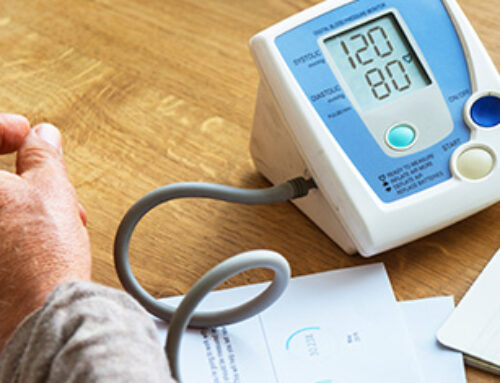How Increased Use of Technology During COVID-19 has Influenced Diabetes Outcomes in Children
Published August 2022 | Back to all news and updates.
The COVID-19 pandemic created a global shift affecting families worldwide and has caused immense consequences to children both mentally and physically. At its onset, much of the world was placed on lockdown, which limited human interaction and replaced it with virtual forms of communication reliant on technology. Increased reliance on social platforms and the internet at large have altered child development to the extent that their mental and physical health is at stake.
Increased use of technology has caused some children to experience challenges in forming human connections and has led to a more sedentary lifestyle, thus putting kids at increased risk for developing chronic conditions such as diabetes later in life. Major factors that contribute to children developing diabetes include family history, lack of physical activity, and poor nutrition. Yet, due to COVID-19, technology has played an increased role as children have become more dependent on the internet, which in turn contributes to an increase in poor food choices and reduced physical activity.
It is estimated that by the end of April, 2020 there were 1.5 billion children worldwide that were forced home due to school closures.1 Stuck at home due to the pandemic, many children began to spend excessive time in front of screens, from TVs to smartphones to tablets. In the US, most schools became virtual and students “attended” via their devices, increasing their screen time and eliminating time for activities like recess or after-school care. Consequently, too much screen time poses several potential negative consequences beyond an increased risk of diabetes, such as vision impairment, sleeplessness, anxiety, and addiction to the device itself.
Several studies have shown that an increased amount of screen time also leads children and adolescents to eat less fruit, vegetables, legumes, lean protein, and nuts, and conversely consume greater amounts of sweets, sugar-sweetened beverages, and fast food. One study links an increased amount of screen time in children ages 3-6 with eating more high-calorie, low-nutrient foods.2 The study goes on to demonstrate that engaging parents and increased involvement has been a successful intervention leading to better eating habits and limiting screen time, which at times has become more challenging during the pandemic.
In some cases, different communities have felt these effects more acutely. Like most students, many jobs shifted to an at-home virtual model, while essential workers were still called into their place of employment, putting their health at great risk. This created a new dilemma, where essential workers were unable to stay home and supervise their children who were now attending virtual school. Black (11.7%) and Hispanic (12.5%) communities already have some of the highest rates of diabetes in this country,3 and also make up a larger share of the essential workforce who are less likely to work from home.4 Less supervision often leads to children and families relying on technology more heavily at home and making it difficult for children to have their guardians encourage healthy practices. Another consequence on the health of children during the pandemic has been that outdoor activities have been limited, especially for children in communities that do not have reliable access to safe places to play outdoors or participate in team sports, thus increasing their risk for diabetes.
On the other hand, there are many upsides to technology in the lives of children and families, some of which may actually improve their health outcomes. The use of technology has supplied children with remote learning capabilities since the pandemic had made it challenging to attend school and other in-person events. Various platforms also benefited children and families to connect with their loved ones and friends while social distancing.
Technology plays an avid role when spreading awareness of diabetes and its risk factors, both for children as well as their parents and guardians. Through technology we are able to use computer programs and virtual learning for health education; download trackers on smartphones that help track weight, diet, or BMI; or communicate with care providers about our health needs. There are numerous apps available for download that provide coaching for smarter, healthier food choices, encyclopedias of nutritional information, and portion size. Several of these products can support diabetes care by alerting folks to eat when appropriate and check blood sugar at regular intervals, and many are free and do not require memberships.
As is often the case around our growing use and reliance on technology, it can often be just as much of a friend as it is a foe. When it comes to diabetes prevention, access to information is greater than ever before. However, this does not come without risk, and the younger generations are growing up in a world spent largely behind a screen, especially during the COVID-19 pandemic. If we can recognize the risk factors, we will be more well-equipped to use this great tool for good.
Want to learn more about our initiatives for diabetes? Click here!
For COVID-19 resources, click here.
Resources
American Psychological Association. Digital guidelines: Promoting healthy technology use for children
-
- http://www.emro.who.int/mnh/news/considerations-for-young-people-on-excessive-screen-use-during-covid19.html
- Pearson, N, Stuart J H Biddle, Paula Griffiths, Julie P Johnson, & Emma Haycraft. “Clustering and correlates of screen-time and eating behaviors among young children.” BMC Public Health 18, Article number753, June 2018.
- https://www.cdc.gov/diabetes/pdfs/data/statistics/national-diabetes-statistics-report.pdf
- https://publichealth.uic.edu/news-stories/black-hispanic-americans-are-overrepresented-in-essential-jobs/
This publication is supported by the Health Resources and Services Administration (HRSA) of the U.S. Department of Health and Human Services (HHS) as part of awards as follow: Health Outreach Partners (HOP) National Training & Technical Assistance National Cooperative Agreement totaling $847,285.00 with 0 percent financed with non-governmental sources and MHP Salud National Training & Technical Assistance Cooperative Agreement totaling $678,959.00 with 0 percent financed with non-governmental sources. The contents are those of the author(s) and do not necessarily represent the official views of, nor an endorsement, by HRSA, HHS or the U.S. Government. For more information, visit www.HRSA.gov.
Blog Topics
This resource provides educational tools that Community Health Workers (CHWs) can use and share with Migrant Seasonal Agricultural Workers and other vulnerable populations to reduce diabetic health complications in oral, eye, and foot health, which are commonly linked to diabetes.








